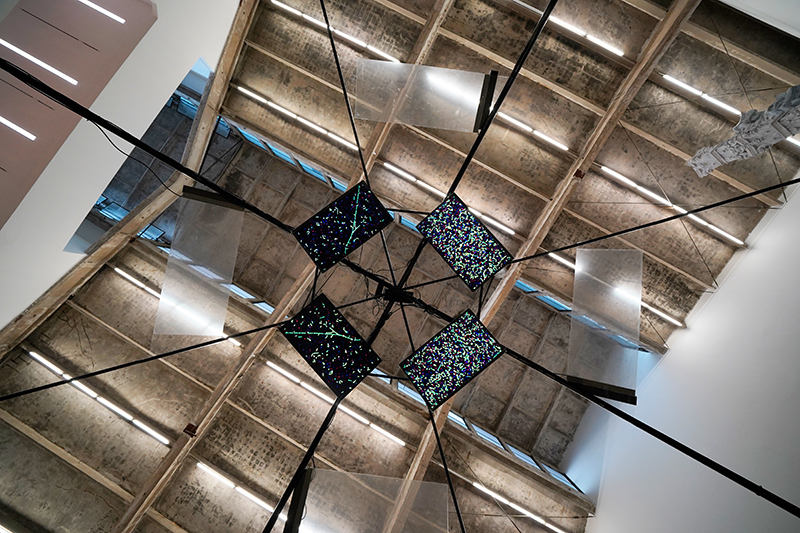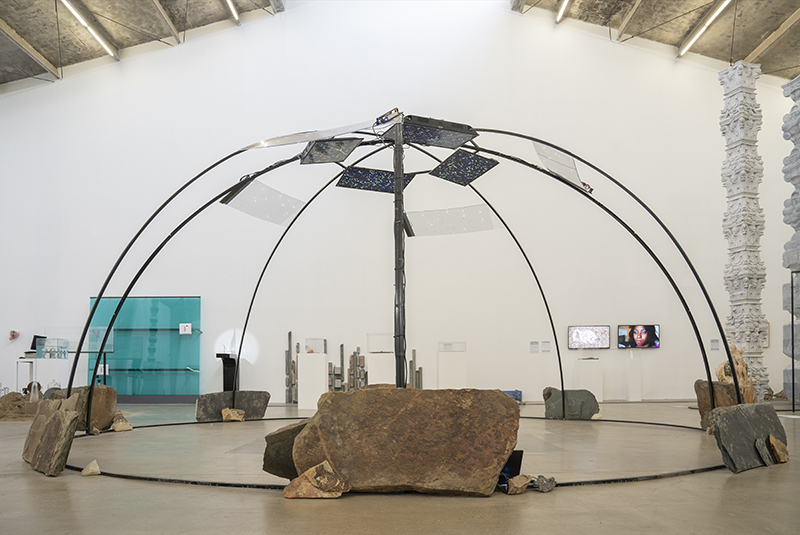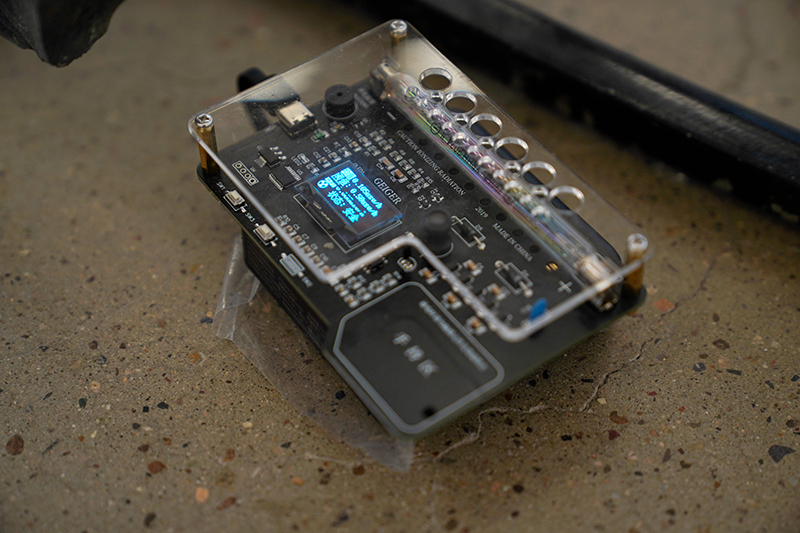 |
The Cosmic Ray Igloo: A Tribute to Mario Merz |
||||||||||||||||||||||||||||||||||||||||||||||||||
|
Background: Cosmic rays, also known as cosmic radiation, are charged high-energy subatomic particles originating from outer space. They can generate secondary particles that penetrate Earth's atmosphere and surface. Approximately 89 % of cosmic rays are simply protons, 10 % being helium nuclei (alpha particles). The remaining 1 % consists mostly of solitary electrons (beta particles for instance), gamma rays, and a tiny fraction of ultra-high-energy neutrinos. Influenced by Earth's atmosphere, cosmic rays contribute only 0 . 3 - 0 . 4 mSv/year to the natural background radiation of individuals on the ground. Outside the atmosphere, there is approximately one proton or heavier atomic nucleus passing through an area the size of a fingernail every second. When cosmic rays approach Earth, they begin to collide with the nuclei of atmospheric gases. During the process of air shower, these collisions produce many pions and kaons, which quickly decay into unstable muons. Since there lacks strong interactions with the atmosphere and as the time dilation effects from relativity set in, many muons are able to reach the Earth's surface. Muons are ionizing radiation and can be easily detected by various particle detectors (from Wikipedia). The cosmic ray detection chip developed by XPECT Vision(Shenzhen) represents alpha particles as larger circular spots through algorithms. Beta particles are displayed as narrow wave-like lines resembling worms, while gamma rays produce small dots or spots. Muons are presented as long straight lines. Procedure: 1 . Construct a frame of Mario Merz-style igloo with a transparent display screen installed above it. 2 . Transmit the images from the cosmic ray detection chip to the display screen using a transparent film capable of displaying them. 3 . Attach radiation value indicators to the stone slabs beneath the frame of the igloo, connecting them to a meter for display.
|


